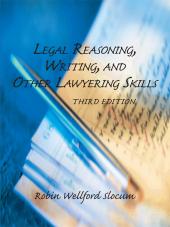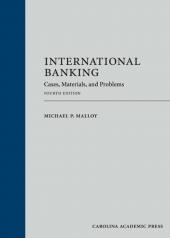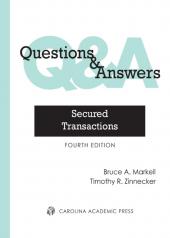Legal Reasoning, Writing, and Other Lawyering Skills
Select subscription type
Terms & conditions
Subscribers receive the product(s) listed on the Order Form and any Updates made available during the annual subscription period. Shipping and handling fees are not included in the annual price.
Subscribers are advised of the number of Updates that were made to the particular publication the prior year. The number of Updates may vary due to developments in the law and other publishing issues, but subscribers may use this as a rough estimate of future shipments. Subscribers may call Customer Support at 800-833-9844 for additional information.
Subscribers may cancel this subscription by: calling Customer Support at 800-833-9844; emailing customer.support@lexisnexis.com; or returning the invoice marked "CANCEL".
If subscribers cancel within 30 days after the product is ordered or received and return the product at their expense, then they will receive a full credit of the price for the annual subscription.
If subscribers cancel between 31 and 60 days after the invoice date and return the product at their expense, then they will receive a 5/6th credit of the price for the annual subscription. No credit will be given for cancellations more than 60 days after the invoice date. To receive any credit, subscriber must return all product(s) shipped during the year at their expense within the applicable cancellation period listed above.
Subscribers receive the product(s) listed on the Order Form and any Updates made available during the annual subscription period. Shipping and handling fees are not included in the annual price.
Subscribers are advised of the number of Updates that were made to the particular publication the prior year. The number of Updates may vary due to developments in the law and other publishing issues, but subscribers may use this as a rough estimate of future shipments. Subscribers may call Customer Support at 800-833-9844 for additional information.
Subscribers may cancel this subscription by: calling Customer Support at 800-833-9844; emailing customer.support@lexisnexis.com; or returning the invoice marked 'CANCEL'.
If subscribers cancel within 30 days after the product is ordered or received and return the product at their expense, then they will receive a full credit of the price for the annual subscription.
If subscribers cancel between 31 and 60 days after the invoice date and return the product at their expense, then they will receive a 5/6th credit of the price for the annual subscription. No credit will be given for cancellations more than 60 days after the invoice date. To receive any credit, subscriber must return all product(s) shipped during the year at their expense within the applicable cancellation period listed above.
Product description
View a sample of this title using the ReadNow feature
To purchase a printed version of this title, please visit www.caplaw.com.
Legal Reasoning, Writing and Other Lawyering Skills (formerly known as Legal Reasoning, Writing, and Persuasive Argument) draws on lessons from neuroscience and psychology to deepen students’ understanding of self and others, and of the emotional biases and filters that undermine their efforts to “think like a lawyer”.
Legal Reasoning, Writing, and Other Lawyering Skills, 3rd Edition retains the same core chapters of earlier editions that emphasize and illustrate the “process” of thinking through, and writing about, a client problem. However, the new edition expands its coverage to include the practicalities of modern-day legal practice, and also expands the lawyering skills that are introduced in the book. In this new edition, the book can be used in a typical two-semester legal skills course, as well as more intensive two-semester courses, and three- and even four-semester courses.
Some of the exciting new coverage of Legal Reasoning, Writing and Other Lawyering Skills includes:
• Lawyer as Investigator: Students often have difficulty appreciating "context" in a simulation course; yet understanding the context of a legal problem is invaluable in helping students grasp the roles they are being asked to assume. For those programs in which there is time to accommodate a client interview, the new edition includes a chapter with a step-by-step approach to eliciting the relevant facts from clients. And, in keeping with the broader vision of the book, the chapter also educates students about the hidden biases and concerns their future clients are likely to bring with them to client meetings, and concrete ways to probe for aspects of their clients' stories that are more challenging to uncover. (Chapter 5).
• Lawyer as Advisor/Collaborator: For those programs in which there is time to accommodate a client counseling meeting, the new edition includes a chapter describing the lawyer's role as advisor/collaborator, and detailing a step-by-step approach to such a meeting. (Chapter 22). Even if there is no class time for students to role-play client meetings, the illustrations still provide valuable context for students to appreciate how their written advice to clients might ultimately be received and how their advice sets the stage for subsequent client meetings.
epub is protected by Adobe DRM.
eBooks, CDs, downloadable content, and software purchases are noncancelable, nonrefundable and nonreturnable. Click here for more information about LexisNexis eBooks. The eBook versions of this title may feature links to Lexis+® for further legal research options. A valid subscription to Lexis+® is required to access this content.
 Lexis Nexis
Lexis Nexis 



